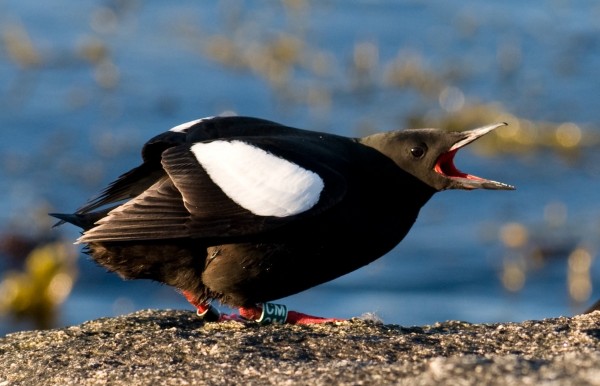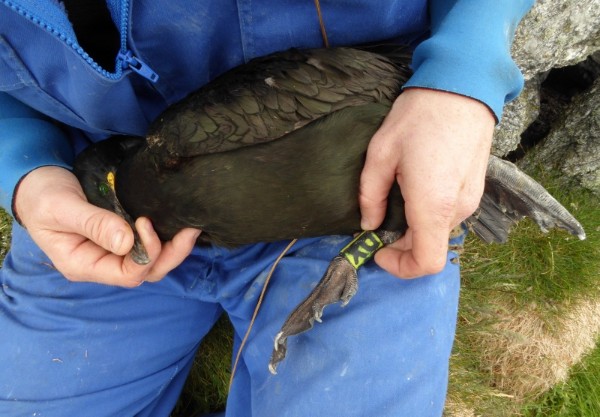Monitoring survival rates
Survival rate of adult seabirds is one of several parameters monitored by SEAPOP. Knowledge gained from this parameter is essential in order to understand the demographic mechanisms driving the seabirds’ population development.
See SEAPOP’s data series for adult seabird survival
Search for trends in seabird survival rates in our data portal!
Adult survival is important for the populations

Photo © Tycho Anker-Nilssen
Population size is the sum of individuals recruited into the population minus those that die or move out of a population. Knowledge about this is gained by monitoring reproduction, survival and dispersal (that is to say, emigration and immigration) in populations. Cause and effect relationships that explain seabird population development can be revealed by measuring how variation in these parameters affects population dynamics. Seabirds are characterised by a long lifespan, which is an adaptation to an environment with high annual fluctuations. Population development is therefore very vulnerable to changes in adult survival, and increased mortality in adult seabirds can quickly lead to a decline in populations.
Today, adult survival is monitored annually in 15 different seabird species in 14 key sites, from Spitsbergen in the north to Agder in the south (see table). Data series have been established for 46 populations, of which the majority are for black-legged kittiwakes (8 sites), common guillemots (6 sites), Atlantic puffins (6 sites) and European shags (5 sites). The longest series is for common eiders on Grindøya, established in 1985. More than 80% of the series have been running for more than 10 years.
Colour rings with individual codes

Photo © Tycho Anker-Nilssen
For SEAPOP, the most common method of collecting data for capture-recapture analyses is to mark nesting birds with colour rings of two-layered plastic (either acrylic or darvic) that have engraved codes of 2-4 letters, or a combination of letters and numbers. The combination of species, ring colour and code thus gives each individual a unique identity. In the following year, observations in the field can determine the presence of individuals in the breeding area, and serve as the basis for estimating adult survival. Registration is greatly aided by the generally high nest fidelity exhibited by seabirds. Conversely, registrations can be complicated by the fact that some colour rings wear down over time and become difficult to decipher.
Read more about the method for calculating survival rate.